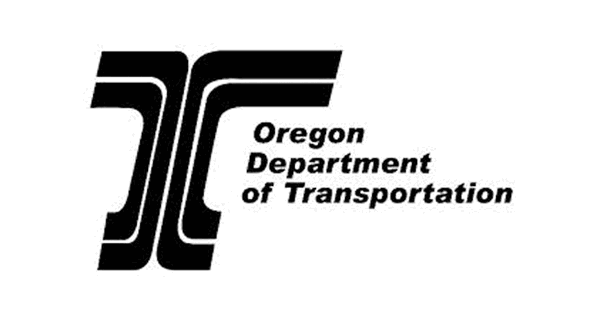Summer brings to mind vacations and road trips, and according to the Oregon Department of Transportation (ODOT) and the Oregon Department of Financial Regulation (DFR), now's a good time to do a little planning and safety checks that could prevent you from suffering a breakdown or, even worse, a highway accident.
DFR reminds Oregonians of safe driving tips and urges them to contact their insurance agent or insurer to review their policies. With changing driving patterns and increased risks during the summer, it's important for drivers to understand their insurance limits and coverage. DFR encourages drivers to talk with their agent or insurer to explore their insurance options and ensure their policies are up to date.
It's also a good time to make sure your vehicle is in good working order by checking the following:
Air conditioning: As temperatures rise, your air conditioner will work harder to keep your car cool. Check the performance of your air conditioner before your trip and don't forget to check your cabin air filters. No air conditioning on a hot summer day affects everyone, but it can be especially dangerous for people with poor health or sensitivity to heat, such as children and the elderly.
Belts and Hoses: To ensure a safe and uninterrupted ride, drivers should regularly check their vehicle's belts and hoses. High summer temperatures can accelerate the deterioration of rubber belts and hoses. Look under the hood and inspect all belts and hoses to make sure the rubber is free of bulges, blisters, cracks or cuts. If there are obvious signs of wear, we recommend replacing them immediately. Also, make sure all hose connections are secure.
Tires: Make sure each tire is inflated to the vehicle manufacturer's recommended pressure, which can be found in your owner's manual or on a placard located on the driver's door pillar or door frame. And don't forget to check your spare tire, if your vehicle is equipped with one. For an accurate reading, check the pressure when the tire is cold, meaning it hasn't been driven for at least three hours. Don't inflate your tire to the pressure listed on the tire itself; that number is the maximum pressure the tire can hold, not the recommended pressure for your vehicle. You don't need a flat tire to deflate; all tires will naturally deflate over time. In fact, under-inflation is the leading cause of tire failure.
Check your tires at least once a month and before any long drives.
Check your tread carefully and replace any tires that have uneven wear or insufficient tread.
All tires should have a tread of at least 2/32 inch. To determine when it's time to change your tires, check the wear bar indicator built into your tire or use the penny test. Turn Lincoln's head upside down and place a penny on the tread. If you can see the top of Lincoln's head, your car's tires may need to be changed.
If you notice uneven wear across your tire tread, you should rotate your tires, align your wheels, or both before driving.
Check the age of each tire: Some car manufacturers recommend replacing tires every six years, regardless of usage.
Electric vehicles are generally heavier than gasoline vehicles, so EV-specific tires are required to support the weight, maximize performance and electric range, while minimizing tire noise. All tires, whether gasoline, electric, or hybrid, require similar maintenance. Low rolling resistance tires for conventional vehicles may also have a reduced tread life.
Inspection does not only include checking the tire pressure and age. Don't forget to check the following points:
If there is any damage or condition that requires attention.
Check the tread and sidewalls for cuts, holes, bulges, scrapes, cracks, or bumps.
Spare tire and car jack kit.
If you notice any damage to your tires, take your vehicle to a tire professional.
Essential Car Components: Regular maintenance of your car's essential components is important to ensure a safe and reliable driving experience. Drivers should regularly check their car's fluid levels, including engine oil, coolant, brake fluid, and windshield washer fluid. Also, inspect the cooling system, battery, and wiper blades to avoid potential breakdowns and maintain clear visibility. It's also important to ensure that headlights, brake lights, turn signals, emergency flashers, and interior lights are all in working order.
Essentials: It's important for drivers to have the necessary supplies in their vehicles for long trips or unexpected situations. The DFR recommends keeping items in your vehicle such as a first aid kit, flashlight, extra water, non-perishable food, jumper cables, a tire pressure gauge, work gloves, a change of clothes, an emergency blanket, towels and a coat. These items can be extremely helpful in an emergency or if you're stranded on the road. Additionally, be sure to pack a charged phone charger, extra windshield washer fluid and a map.
“We encourage all drivers to make safety their top priority this summer by following these important tips,” said Insurance Commissioner and Director of the Department of Consumer and Business Services Andrew R. Stolfi. “By practicing responsible driving habits and taking proactive measures, we can collectively make our roads safer and contribute to a more enjoyable driving experience for everyone. In addition to taking safety measures, drivers should ensure their auto insurance coverage is updated and that an up-to-date certificate of insurance is in their vehicle before setting off.”
ODOT has published a summer news packet with lots of information for people traveling around the state, including construction updates, travel tips, etc. ODOT also encourages people to check road conditions at www.tripcheck.com before any road trips.



